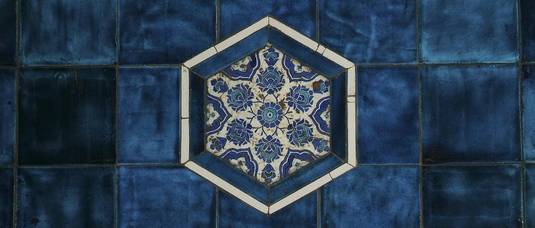On
Monday the 18th of February, our class took a site visit to Sir
Frederic Leighton’s house to explore the way he incorporated the Victorian idea
of Orientalism into his home’s structural and decorative designs, as well as to
view some of his and others’ famous works from the Victorian period. In class,
someone described Orientalism as the way the West viewed the East. More specifically,
the East means the Middle East and Northern Africa, and the PowerPoint for this
week described Orientalism as sometimes incorporating Aestheticism, especially in
the works of artists like Leighton. With Aestheticism focusing on the “useless’
beauty in art, it was easy to see the way that Leighton incorporated both Aestheticism
and Orientalism in his art, but more readily in the design of his home.
In
particular, the segment of Leighton House that stood out to me the most in
terms of Orientalism and Aestheticism were the blue tiles that lined the stairwell,
foyer, and Narcissus Hall that led to the Arab Hall. The tiles themselves were
made by a Victorian tile maker, De Morgan, meaning they were a Western representation
of the East. Our tour guide said that De Morgan made all of the tiles by hand
with the rich blue hues that were traditionally found in and representative of the
Middle East. However, both De Morgan and Leighton traveled throughout the
Middle East and were capable of forming their own representations of what an
Eastern decoration should be. Because of this, Leighton’s home does not follow
traditional Victorian Orientalism, since the PowerPoint states that many Orientalists
of the time had not been to the East, but rather created works off travel
writings or imagination. Nevertheless, Leighton House still fits the Orientalism
theme because of the incorporation of Leighton’s Western background and his ideas
of the East. Also, Leighton’s interest in molding his home to the themes of the
East represents the ideas of Orientalism and Aestheticism because he brought in
a new form of beauty that was different and unnecessary to the Victorian time
period.
https://www.rbkc.gov.uk/subsites/museums.aspx

Julia,
ReplyDeleteI've never thought of aestheticism as the "useless" beauty of art before, but I can see how that could come into play in Leighton's house. He focused on decorating his home to provoke emotion and inspiration rather than to truly represent the Eastern culture. These blue tiles that he used to decorate his walls are a great example of Orientalism and how he used them to interpret his own representation of what he believed to be the East. Leighton also had imported tiles within his home in the Arab Hall, and I find it quite interesting that even though he had traveled through the Middle East and had his own tiles, he still created these to form that aestheticism that you mentioned in the beginning. I really enjoyed reading this because it gave me a new perspective. Thanks!